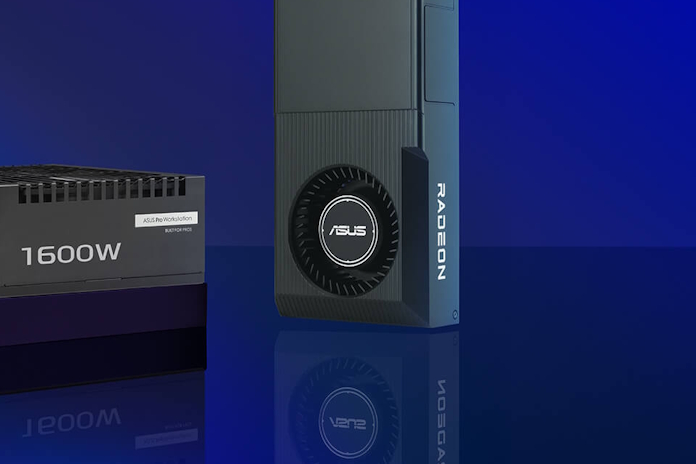Blower-style GPU coolers used to be more popular, but these days open-air GPU coolers have largely taken over. Based on your past experience with graphics cards, you might be wondering where all the blower-style coolers went. The short answer is that open-air coolers are a better fit with modern GPU designs, especially since multi-GPU setups are only relevant for very specific use cases.
But there is a longer answer, and it’s a bit more nuanced. So let’s step back and look at GPU cooler design more holistically. What’s the job of a GPU cooler, and what are the key differences between the main GPU cooler types? What elements of a GPU cooler should you keep in mind as you pick a graphics card in 2025? Let’s dig in.
This article is part of our “Back to Basics” series designed to help PC building newcomers make informed decisions about component purchases and assemble their new PC with confidence. Click here to browse the entire collection of posts.
What is a GPU cooler, and what difference does it make?
A GPU cooler is the portion of your graphic card responsible for cooling the GPU, memory chips, and power delivery system.
First and foremost, a GPU cooler’s job is to make sure that your graphics card doesn’t experience thermal throttling. Graphics cards produce heat when they’re under load, and if temperatures climb too high, the hardware will protect itself by scaling back performance. If thermal throttling happens when you’re gaming, for example, you’ll see a big drop in FPS.
Another important factor is noise. Nobody wants a GPU cooler that makes a racket like a leaf blower. Admittedly, you’ll be hard pressed to find a modern graphics card that makes that much noise, but you will notice significant differences in the acoustic performance of different cards on the market, even for cards with the same GPU.
Finally, GPU coolers are an important factor when it comes to the longevity of your graphics card. A GPU that’s kept at comfortable operating temperatures is a GPU that’s more likely to provide years of reliable service.
What are the different parts of a GPU cooler?
GPU coolers have a variety of different elements, each with their own role to play.
- Baseplate / coldplate. GPU coolers have a flat metal surface, usually made of copper, that sits right on top of the GPU die. Its job is to transfer the heat produced from this silicon chip into the heatsink. This element is carefully machined for enhanced thermal performance.
- Thermal interface material (TIM). A small amount of thermally conductive material between the GPU die and the baseplate ensures effective heat transfer. Usually it’s some kind of thermal paste, but some higher-end graphics cards use a phase-change GPU thermal pad or liquid metal thermal compound here.
- VRM and memory cooling. Graphics cards often use thermal pads to keep VRAM chips and voltage regulators cool.
- Heatpipes / vapor chamber. Heatpipes are hollow tubes filled with liquid that move heat away from the baseplate and into the heatsink. Higher-end graphics cards might incorporate upward of eight heatpipes, while entry-level to mainstream cards typically make do with three or four. Some high-performance graphics cards incorporate a vapor chamber to assist in transferring heat from the baseplate to the heatpipes.
- Heatsink. A heatsink is a large array of fins, usually made of aluminum, that dissipates heat into the air. Heatsinks with more surface area due to a bigger or denser fin stack can dissipate more heat, but closely packed fins also impede airflow, requiring specialized fan designs. Heatsinks vary considerably in size to meet the needs of different use cases, ranging from large heatsinks for high-performance units to slim and short heatsinks built to fit into smaller PCs.
- Fans. For a heatsink to dissipate heat, it must have air moving through the fins. Graphics cards typically use two or three fans to keep air moving through the heatsink, though quad-fan models do exist, and blower-style GPU coolers only use one fan.
- Shroud. GPU coolers are typically enclosed by a shroud, which helps direct airflow and hold the fans in place, but it’s also a cosmetic element.
- Backplate. Modern graphics cards often include a backplate on the rear of the PCB, primarily to provide rigidity and structural integrity. However, some backplates assist with cooling, as well, through ventilation and/or thermal pads that help keep temperatures low.
Each of these components can contribute to the total cooling power of a GPU cooler, with the best incorporating efficient, high-quality versions of all of the above.
What are the different types of GPU coolers?
GPU coolers commonly fall into three basic types: open-air, blower-style, and AIO (all-in-one) liquid coolers. Each type of cooler has a different mechanism for moving heat away from the graphics card and out of your case.
In 2025, most graphics cards use an open-air GPU cooler. Open-air coolers use some number of fans, usually two or three, to blow air down into the heatsink. The warmed air disperses into the case interior, where it then needs to be exhausted from the chassis. For this reason, open-air coolers require good airflow in your PC case.

That might sound like a disadvantage, but most of the time it’s not. Most modern PC cases are designed to provide robust airflow through extensive ventilation and thoughtful fan placement. Open-air GPU coolers can take advantage of this airflow very effectively, giving your graphics card the cooling that it needs while producing very little noise. When installed in a standard-sized PC case with sufficient case fans for both intake and exhaust, graphics cards with open-air coolers are an excellent choice. If you do find that the heat produced by your graphics card is warming up your other components more than you like, you might consider switching to a dual-chamber PC case.
If you’re building a PC in a small chassis where there’s limited room for airflow, you might consider a blower-style cooler instead. Blower-style coolers have a single fan that draws in cool air at one end of the card and pushes it through the heatsink. The GPU shroud channels warmed air out through a dedicated vent in the bracket that you use to mount your graphics card to your case.
The key advantage of a blower-style cooler is that it prevents hot air from recirculating inside your case. This can be an important concern if you’re building in a case that doesn’t have enough room for a wide airflow path. However, blower-style coolers have limitations. Since they only use one fan, and this fan is almost always smaller than the ones on an open-air cooler, this fan must do all the heavy lifting by itself — and it’s usually noisier as a result. Blower-style coolers have limited cooling capacity compared to open-air coolers, so they’re not well-suited for high-end graphics cards, which produce more heat.
Finally, some high-end graphics cards use an AIO cooler. This type of cooler uses a dedicated liquid cooling pump and tubing to transfer heat from the coldplate to a separate radiator with its own fan array. This setup offers the highest cooling potential out of all three types, making them a preferred pick for GPU overclocking enthusiasts. Another advantage of an AIO cooler is that it’ll play a big role in the airflow pathway for your entire PC. Establish it as an exhaust, and the warmed air will move directly out of your PC case. Set it up as an intake instead, and the radiator will have access to air that hasn’t been warmed up by your other components.
Confirm that your PC can fit the GPU cooler of your choice
As you’re picking a graphics card, the size of its GPU cooler is an important concern. GPU coolers have increased in size in order to keep up with the cooling requirements of modern GPUs. If it’s been a while since you last shopped for a graphics card, you might be surprised by how large some of them have gotten.
For most PC builders, bigger is better when it comes to GPU coolers. A thicker and longer heatsink equipped with more fans will be better equipped to offer a great balance of thermal and acoustic performance than a smaller heatsink with fewer fans. This is especially important with high-end GPUs: if you’re building a PC with one of today’s top-end graphics cards, don’t be shy about going big. Just make sure to prop up your graphics card with a GPU holder to prevent GPU sag.
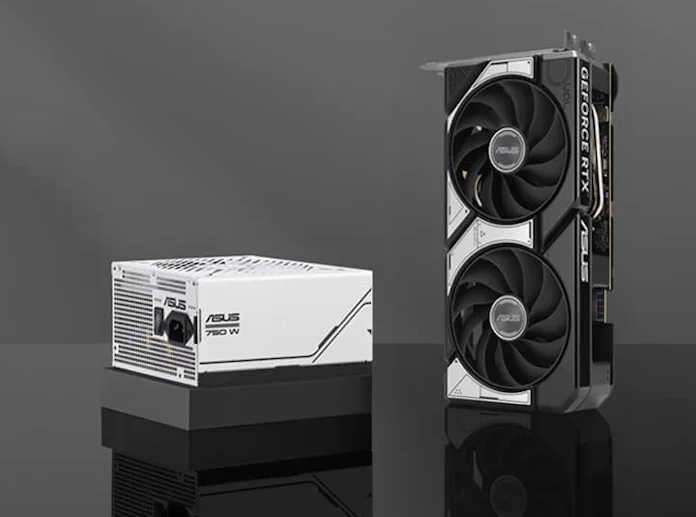
Most of today’s most popular PC cases are compatible with even the largest graphics cards on the market, but you should still take a moment to double-check that your case has room for your preferred card. Primarily, pay attention to the length of the graphics card. If you’re building in a small-form-factor case or upgrading the graphics card that came with your prebuilt desktop PC, you might not be able to install a longer card. A compact card with dual-fan array might be your best choice in this scenario.
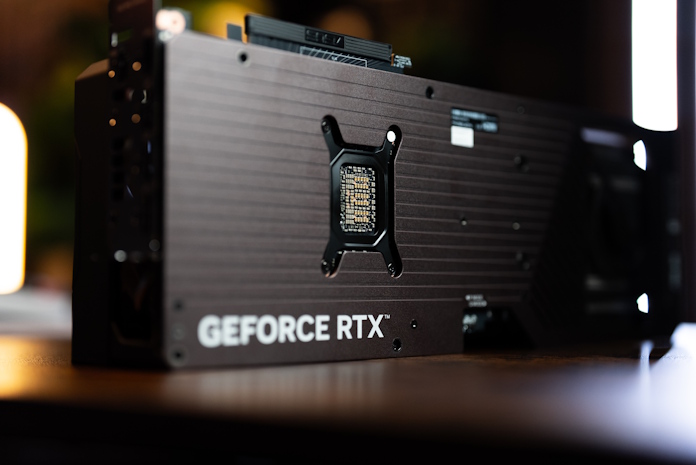
Some users might also need to think about the thickness of their graphics card. Usually we talk about the thickness of a card in terms of slots: a 2.5-slot card is fairly slim, whereas a 4-slot card has a very thick heatsink and beefy fans. The “slot” measurement tells you how many expansions slots might get covered up by the heatsink of your card. For most folks, the thickness of their graphics card is only a concern if they intend to use more than one expansion slot in their PC, perhaps for an audio card, capture card, or NIC. If that’s you, look for a graphics card that’s 2.5-slot or thinner.
What type of GPU cooler is best?
For most users, we recommend a graphics card with an open-air GPU cooler. This cooler type supports graphics cards of all power levels, and it’s a great pairing with modern PC case designs, which prioritize robust airflow.
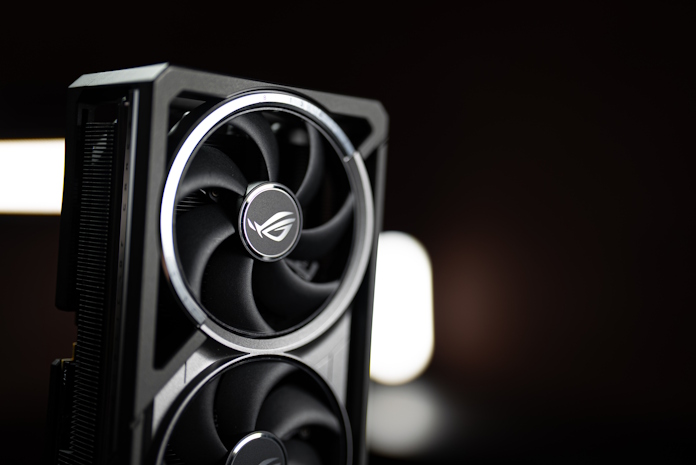
If you’re purchasing an entry-level or mainstream graphics card, you don’t need to go overboard with the size of your graphics card, but for the most part you should happily opt for cards with larger rather than smaller GPU coolers. For a PC that goes all-out on either potent performance or ultra-quiet operation, we recommend graphics cards with large open-air GPU coolers.
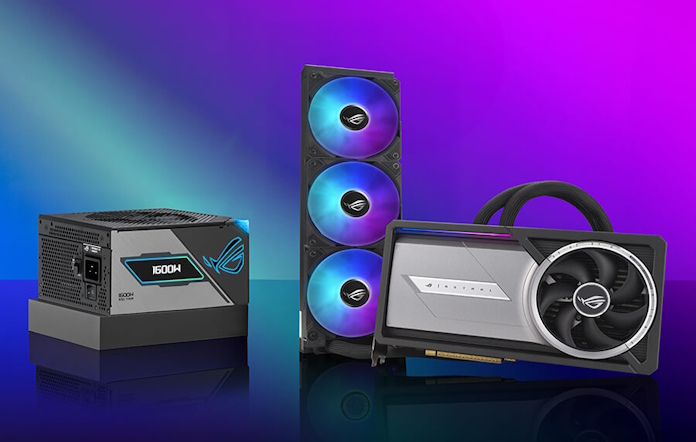
Graphics cards with AIO coolers tend to be premium options catering to PC enthusiasts pursuing ultimate performance. It takes a bit more advance planning to select a case that’s ready to accommodate a graphics card with an AIO cooler, especially if you’re also looking to connect an AIO CPU liquid cooler. But that work will pay off in the form of a system that offers both astounding performance and exceptional cooling. Check out the ROG Astral LC GeForce RTX 5090 if you’re interested in such a card.
While we don’t recommend blower-style GPU coolers for everyone, there are scenarios where they’re a reasonable choice. They’re worth considering if you’re building a PC in a smaller chassis without as much room for airflow, but arguably they’re most relevant in 2025 for multi-GPU workstations. The ASUS Turbo Radeon™ AI Pro R9700, for instance, is perfect for users going big on VRAM to accelerate AI workflows or content creation tasks.

